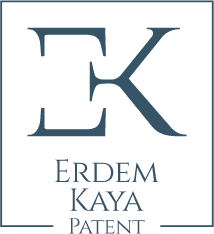The first condition for obtaining a patent for an invention is that it must solve a technical problem. In other words, the benefit derived must be objective and measurable. For example, it is not possible to obtain a patent with the argument that you have produced very delicious milk. This is because the concept of taste is subjective and varies from person to person and is not something that can be measured. However, if you have produced milk with a longer shelf life than what is currently available on the market, this means you meet the condition of solving a technical problem.
The second condition for your invention to be patentable is that it must be novel worldwide. This means that the solution you propose must not have been disclosed to the public in writing, orally, or through use before the date of your patent application. For example, if the solution you consider to be an invention was disclosed in an American patent document five years ago, your invention unfortunately does not meet the novelty criterion. Even if you only want to obtain a patent in Turkey, the requirement for worldwide novelty in our patent law can prevent you from obtaining a patent due to the existence of that American patent.
The most effective method to determine novelty is through a patent search. If you work with an experienced and technically competent patent attorney, they will conduct a comprehensive patent search for you and determine which features of your invention are not present in the prior art. You can also perform basic patent searches using public databases (such as Espacenet).
If the patent search results indicate that there is no identical solution to your invention, the next barrier you need to overcome is that your solution method should not be obvious to a person skilled in the art in light of the relevant prior art. A person skilled in the art is a hypothetical character whose fundamental characteristic is being very knowledgeable about existing technology but lacking inventive ability. The criterion of obviousness is very open to interpretation, with dozens of books written on how it should be evaluated, and it is a criterion whose case law changes dynamically. To give you a basic understanding of this criterion, let me explain it in the simplest terms. For example, if you made indentations on the side surface and bottom of a water jug to make it easier to carry, but a similar solution was developed in the prior art for barrels, then your solution would be considered obvious. However, if you positioned the indentations on the side surface and bottom in such a way that tests showed a 30% reduction in the load on the spine, there is a high probability that your invention would be considered non-obvious.
The last criterion is industrial applicability. If you describe a practical solution in sufficient technical detail in the patent document, you will not have any problems with this criterion. However, if you try to protect an abstract idea without providing much detail in the patent, it will not be possible to meet the industrial applicability requirement. For example, stating that you will use an electric motor together with an internal combustion engine to achieve significant fuel savings will not suffice for obtaining a patent. This is because there are many unanswered questions here, such as how the output shafts of the two motors will be combined and how it will be determined which motor will be active at what time. To obtain a patent for an invention, you do not need to have produced it, and there does not even need to be a prototype. However, you must provide enough technical information in the patent document for a person skilled in the art to implement the invention, even if it is only a sketch.
Finally, the real analysis of all these criteria is conducted during the patent search and examination processes after the patent application by the relevant patent examiners at official patent offices. If you work with an experienced patent attorney, they can also give you a basic idea of the patentability of your invention before the application.
Inventions that meet all these criteria are entitled to receive a 20-year examined patent certificate. As an exception, the criterion of non-obviousness is not required to obtain a utility model registration. For example, increasing the surface area of a washing machine casing to provide strength would be considered an obvious application and therefore cannot be protected by a patent. However, if such an application has not been done before in a washing machine, i.e., the novelty criterion is met, this solution can be effectively protected legally for 10 years with a utility model.
There are dozens of books, hundreds of articles, and court decisions on the interpretation of patentability criteria. In this article, I aimed to simply convey the basics of the subject to you, my esteemed readers.
With my deepest love and respect.





